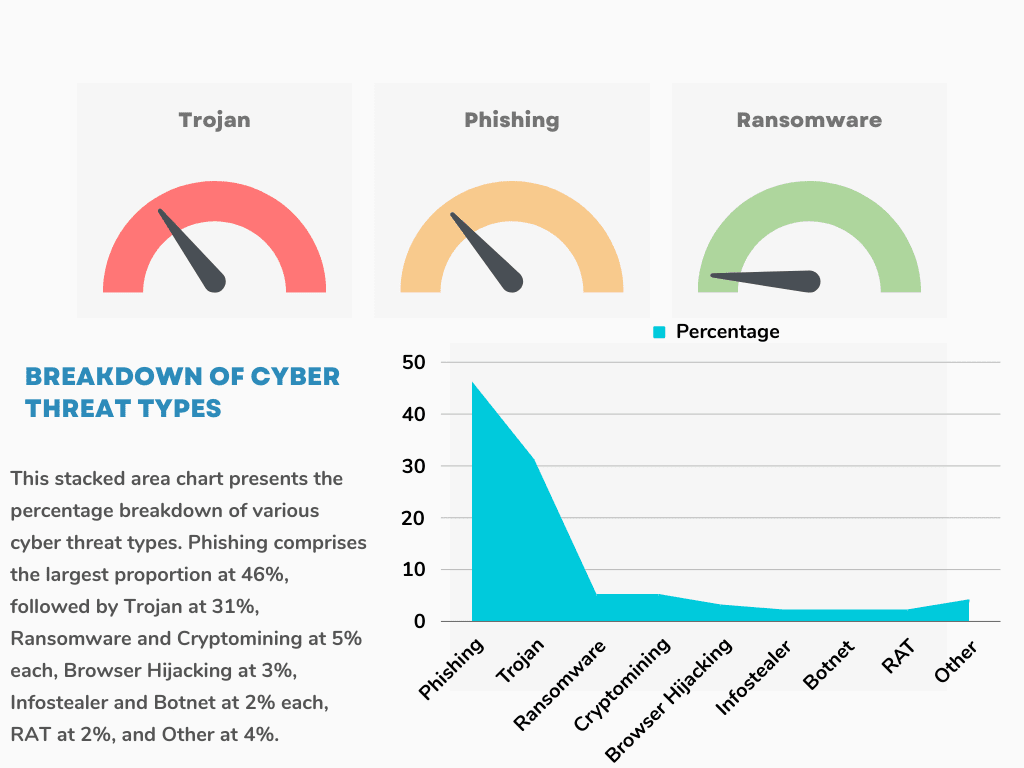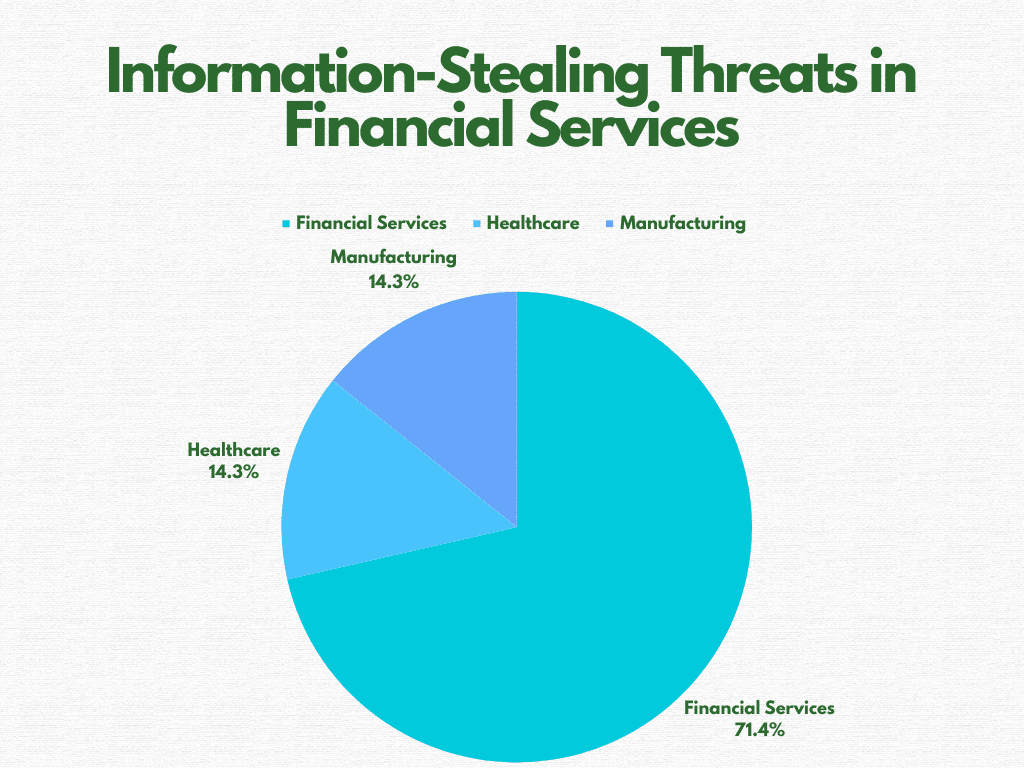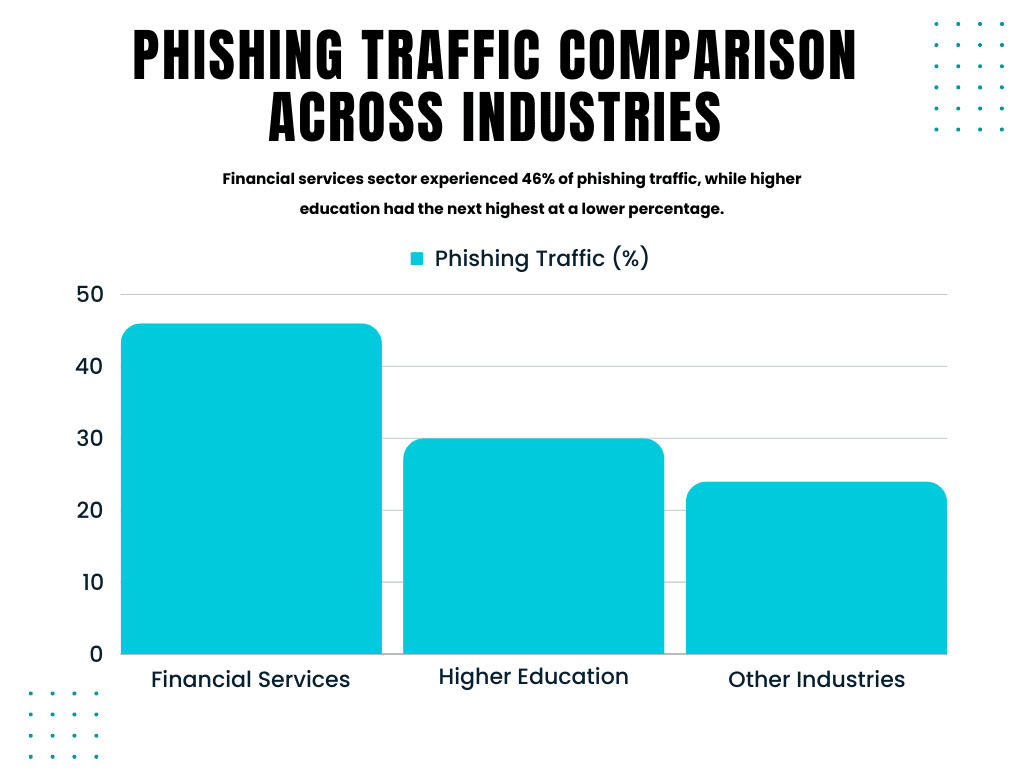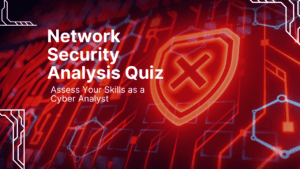In today’s changing world of cyber threats phishing stands out as a widespread danger especially for the financial services industry.
Recent data, from Cisco’s Cyber Security Threat Trends report highlights the frequency of phishing attacks in this sector emphasizing the importance of increased awareness and strong defense mechanisms.

As I delved into the information provided by Cisco I gained insights into the nature and scale of this threat leading me to analyze its implications and possible strategies for mitigation more deeply.

Understanding the Threat Landscape

The statistics reveal a reality; phishing remains the cyber threat that targets financial institutions accounting for 46% of malicious query traffic within this industry.
This significant figure significantly surpasses industries, with higher education coming in at a second.
This targeting underscores why financial institutions are targets for cybercriminals aiming to make substantial gains.
Furthermore the financial services sector faces a range of attacks beyond phishing.
The data highlights a trend of information stealing threats that make up a portion of malicious activity within this industry.
Despite representing 2% of internet query traffic, financial services experienced a fivefold increase in such threats compared to healthcare and manufacturing sectors.
The difference highlights how cyber adversaries relentlessly seek data and financial assets in this field.
Insights and Implications

As I studied the statistics from Cisco’s report, several key insights emerged, shedding light on the modus operandi of cyber criminals and the vulnerabilities inherent in the financial services sector.
To begin with the widespread occurrence of phishing attacks shows that threat actors employ an approach to exploit vulnerabilities.
They use tactics to infiltrate organizations and obtain information.
Furthermore, the disproportionate targeting of financial institutions underscores the high-stakes nature of these attacks, with cyber criminals relentlessly pursuing monetary gains.
The interconnectedness of financial systems and the sheer volume of transactions make banks, insurance companies, and other entities prime targets for exploitation, necessitating a proactive and vigilant approach to cybersecurity.
Strategies for Mitigation
Given these findings it is crucial for financial institutions to prioritize cybersecurity measures that address the risk posed by phishing attacks and threats related to stealing information.
This requires an approach that includes both solutions and robust educational programs, for users.
Investing in technologies for detecting threats, such as anomaly detection powered by AI and real time monitoring systems can strengthen defenses against phishing attempts. Promptly identify suspicious activity.
Additionally implementing authentication protocols and adopting a security model based on zero trust can reduce the risk of access and data leakage.
Furthermore it is essential to foster a culture of cybersecurity awareness among employees to mitigate the element in phishing attacks.
Regular training sessions, simulated exercises mimicking phishing attempts and clear communication of security policies can empower staff to recognize and report emails thereby strengthening the organizations defenses from within.
In conclusion
The prevalence of phishing attacks in the financial services sector highlights the need for cybersecurity measures and increased vigilance.
By leveraging insights from Cisco’s Cyber Security Threat Trends report organizations can gain an understanding of the evolving threat landscape. Implement strategies to safeguard against malicious actors.
In an era characterized by innovation and interconnected systems, protecting financial data is of utmost importance.
Financial institutions can also strengthen their defenses against phishing and information stealing threats by taking a thoughtful approach to cybersecurity.
This involves combining technologies implementing protocols and educating users.
By doing so we can work together to combat cybercrime and protect the integrity of the financial system.


